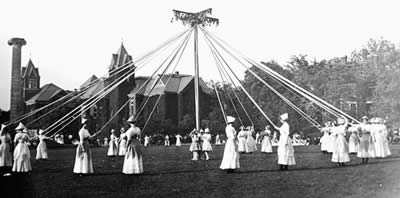Difference between Labor Day and May Day
Key Difference: Labor Day is a federal holiday in the United States that is celebrated to honor the contributions of the American laborers and also the American Labor Movement. May Day has two meanings: one to celebrate laborers (known as International Worker’s Day) and celebrating the start of summer.
 Labor Day and May Day are often confused to be the same thing but they are actually different days and celebrated for different reasons. Labor Day and May Day can refer to the same celebration but that may not always stand true. Let’s make it a little less confusing.
Labor Day and May Day are often confused to be the same thing but they are actually different days and celebrated for different reasons. Labor Day and May Day can refer to the same celebration but that may not always stand true. Let’s make it a little less confusing.
Labor Day is a federal holiday in the United States that is celebrated to honor the contributions of the American laborers and also the American Labor Movement. The day is a yearly national tribute to the contributions workers have made to the strength, prosperity, and well-being of their country. The day can be dated back to 1886 and was promoted by the Central Labor Union and the Knights of Labor.
The two groups established a parade for the laborers on May 1, 1886. However, an incident that resulted in a peaceful protest to turn violent and loss of lives, the date of the celebration was shifted from May 1 to the First Monday in September. The celebrations included in giving the laborers a day off and keeping a feast in their honor to their family members. The day included a picnic, games and fun activities. According to the United States Department of Labor, Labor Day is often celebrated with a parade in order to, “exhibit to the public "the strength and esprit de corps of the trade and labor organizations."
Honoring laborers is also celebrated in other countries but in association with the International Worker’s Day on May 1st. This results in the confusion that stems from naming two same events with different names. However, May 1st is not limited to honoring laborers.
 May Day has two meanings: one to celebrate laborers (known as International Worker’s Day) and celebrating the start of summer. The first meaning came around in the late 19th century, whenMay Day was chosen as the date for International Workers' Day by the Socialists and Communists of the Second International to commemorate the Haymarket affair in Chicago. Haymarket affair was the peaceful protest that turned violent and resulted in the death of as many as 7 people. The protest was organized by laborers that wanted a shorter working day – reducing the daily working hours from 10 to 8 hours.
May Day has two meanings: one to celebrate laborers (known as International Worker’s Day) and celebrating the start of summer. The first meaning came around in the late 19th century, whenMay Day was chosen as the date for International Workers' Day by the Socialists and Communists of the Second International to commemorate the Haymarket affair in Chicago. Haymarket affair was the peaceful protest that turned violent and resulted in the death of as many as 7 people. The protest was organized by laborers that wanted a shorter working day – reducing the daily working hours from 10 to 8 hours.
However, the first and foremost meaning of May Day of honoring the start of summer and life can be dated back to the pre-Christian times. May Day is an ancient Northern Hemisphere spring festival that includes dancing, singing, extravagant food and sweets. The earliest celebrations honored were known as the festival of Flora that would honor Floralia, the Roman goddess of flowers.
May Day is also associated with the Gaelic Beltane, most commonly held on April 30, which was a traditional summer holiday in many pre-Christian European pagan cultures. While February 1 was the first day of Spring, May 1 was the first day of summer; hence, the summer solstice on June 25 (now June 21) was known as Midsummer. Many countries celebrate the day using different traditions, some also include Mother Mary. However, each festival celebrates the beginning of summer and includes dancing, music, singing, games, food, sweets and many other fun activities.
Comparison between Labor Day and May Day:
|
|
Labor Day |
May Day |
|
Observed by |
United States |
Worldwide |
|
Type |
Federal Holiday (federal government, DC, and U.S. Territories); and State Holiday (in all 50 U.S. States) |
Is a National Holiday in some countries but not in others |
|
Celebrations |
Parades and barbeques |
Poles, celebration, food, etc. |
|
Date of Celebration |
First Monday in September |
1st May |
|
Frequency |
Annual |
Annual |
|
Celebrated for |
National tribute to the contributions workers have made to the strength, prosperity, and well-being of their country. |
Celebrating the contribution of the workers to the economy of the country.
Celebrating spring and the rebirth of nature. |
|
Other names |
Labour Day |
International Worker’s Day |
|
Began |
Was promoted by the Central Labor Union and the Knights of Labor, who organized the first parade in New York City |
May 1, 1886; Can also date back to Pagan Times. |
|
Signifies |
The unofficial ending of the summer season |
The start of spring and the rebirth of nature |
|
Similar celebrations around the world |
Labor day around the world is often synonymous with International Worker’s Day, which is observed on May 1 |
In many different countries, may day (celebrating the start of spring) is given different names. The May Day synonymous with the International Worker’s Day is same or similar in many countries |
Image Courtesy: pavcsk12.org, moz.com









Add new comment